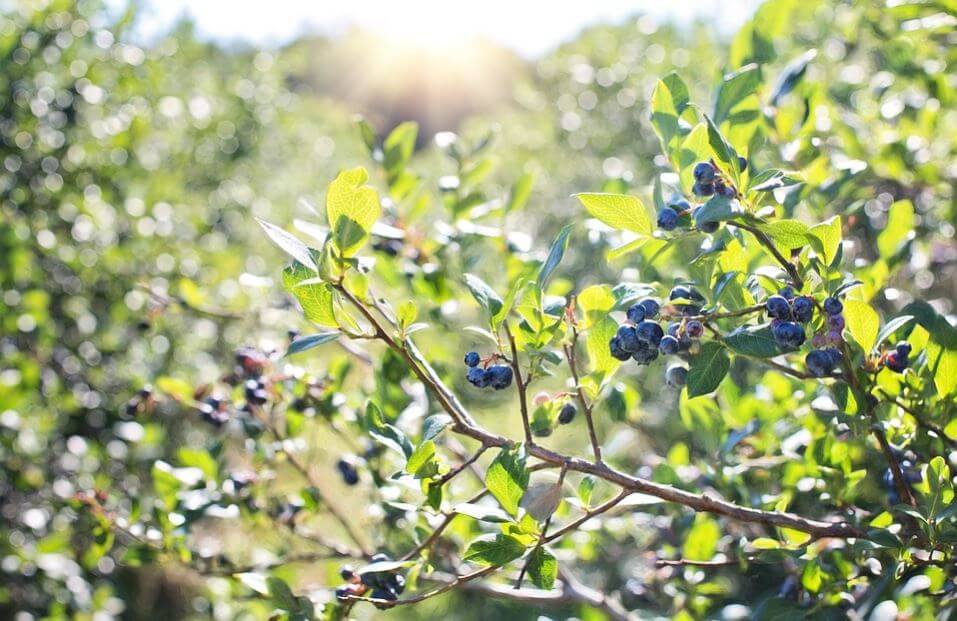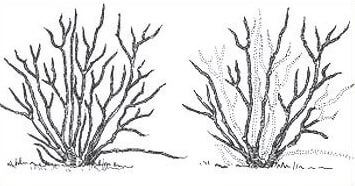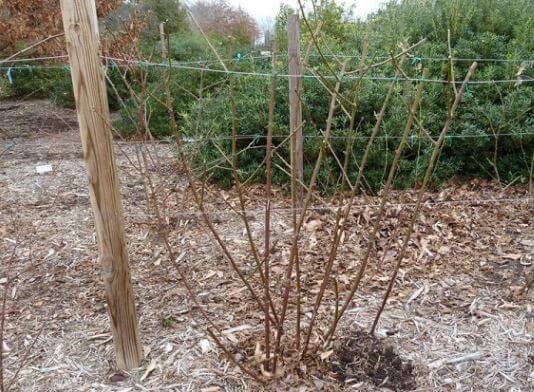
Pruning is essential to a productive and healthy fruit bush. For that reason we have created this step-by-step guide on how to prune a fruit bush which looks at those with a bushy and sucker/cane growing habit.
Pruning a Bushy… Bush
Fruit bushes witha bushy growing habit are all those species with branches spreading from one main trunk usually close to the ground level. These include most varieties such as blueberries, blackcurrants, redcurrants etc.
Bushy fruit bushes produce the most fruit on 2-3 year old branches and lose their vigour after that third year. Pruning therefore is the art of facilitating a constant cycle of rejuvenation keeping the plant young, healthy and heavy with fruit.
- Pruning should be carried out in the winter while the bush is still dormant. I would advise waiting until early spring as the buds begin to develop. This will give you a clearer indication of which branches are worth keeping. Fruit buds will be more round and fat than their thinner vegetative counterparts.
- In the first two years pruning is a light exercise, simply ridding the plant of anything dead, dying or diseased – the three D’s. As always when dealing with anything diseased you need to sterilise your pruning equipment and burn any of the affected branches or leaves after they have been pruned out to prevent the spread of contamination.

- As the bush has established itself pruning becomes a practice of training and increasing productivity. After removing the three d’s you want to maintain a good evenly spaced shape with the branches growing as horizontally as possible as these will be the branches capable of supplying the most fruit.
- As the bush grows older pruning should include cutting out any of the older more woody branches.
- With this done you leave only the younger, more vigorous branches which crop the heaviest. This is better for fruit production and will help prevent the bush exhausting itself and falling into a biennial harvest.
- Now you will want to prune out any crossing branches or areas of congestion. You need to open the bush up to sunlight and good airflow as to prevent the spread of pests and disease. Suckers and low-hanging branches are more of an issue with a fruit bush.
- If it appears as if the fruit will be resting on the floor cut out that branch. This helps prevent disease and pests from destroying your crop.
Pruning a Sucker Bush
Some bushes, mainly Raspberries and Blackberries, grow in a sucker fashion meaning that they grow new stems from the base of the plant year on year as opposed to having a truck or main branch. Both also only grow fruit on one year old canes and so it is essential to annually prune these bushes maintaining this cycle of rejuvenation.
Again this process should be carried out in late winter or early spring. More recently horticulturalists have realised that the old canes send carbohydrates back to the roots which can boost the plant’s vitality and therefore it may be worth waiting until spring time before you prune them out.

- First of all tend to the 3 D’s.
- Every year you need to monitor and remove those canes which have produced fruit during the harvest season. You can cut these out right at the base but leave a little length so the cut does not become contaminated from the soil and pests.
- Lastly remove any weak or spindly looking branches. These won’t be able to bear much fruit and will simply limit air-flow and sunlight reaching the more productive canes.
- You can now tie in these main canes to their support and expect a bumper crop as summer comes around!
Hopefully with this guide we have given you all the information on how to prune a fruit bush. As always check the specific requirement for your plant to ensure a healthy life and a bumper crop!